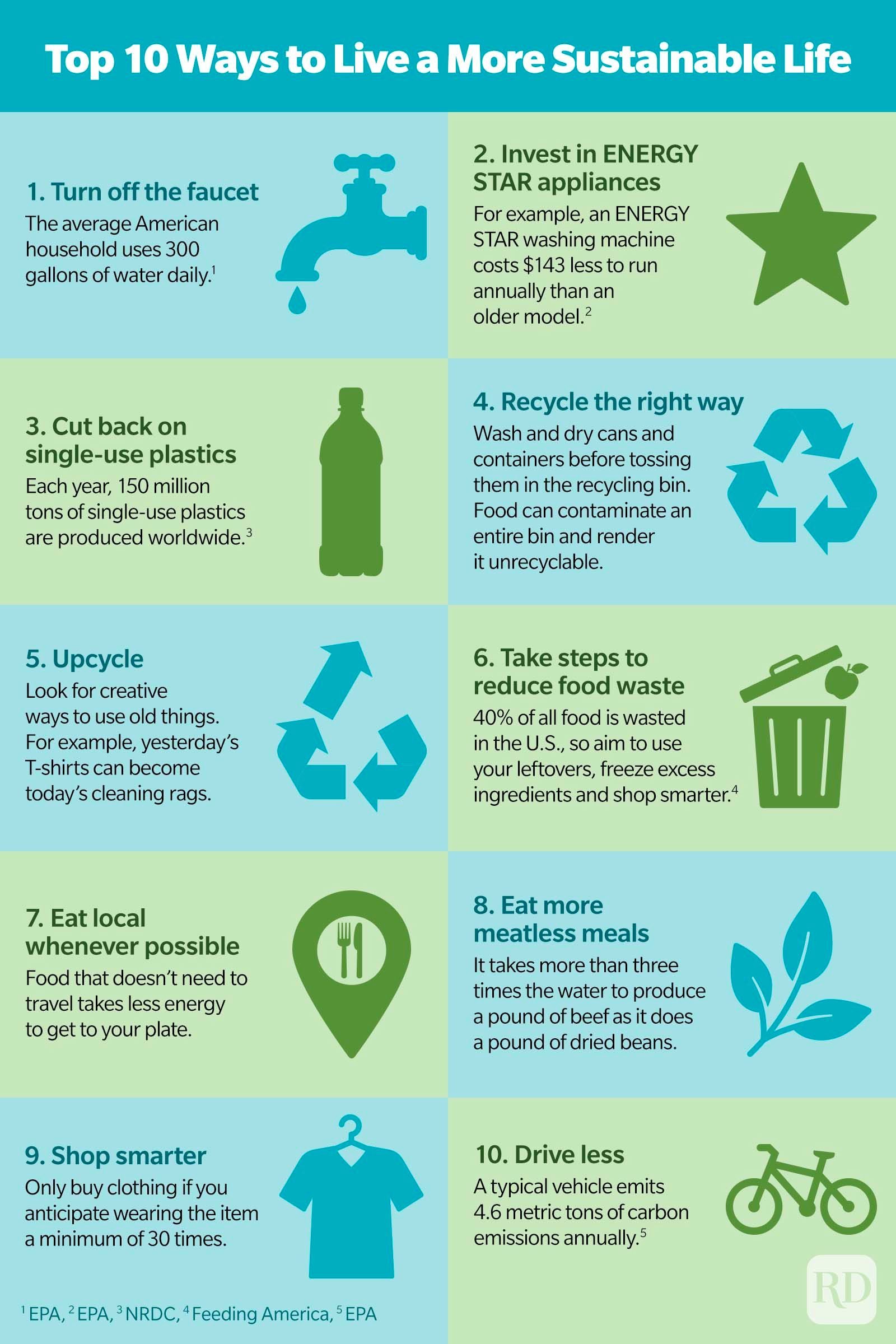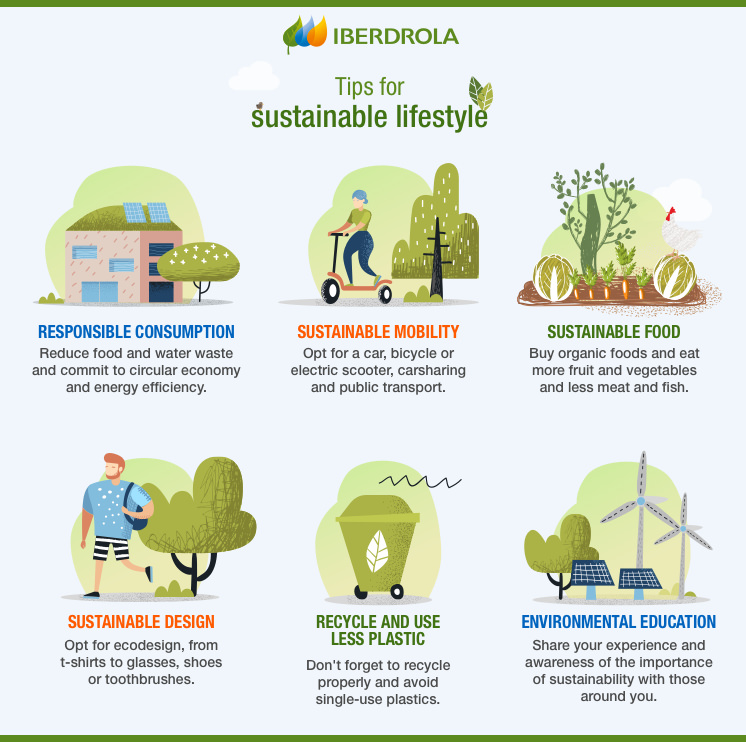Introduction to Sustainable Living
In an era dominated by concerns about climate change and dwindling natural resources, the concept of sustainable living has emerged as a beacon of hope and practicality. This lifestyle approach emphasizes reducing our environmental impact through mindful consumption and preservation of the Earth’s precious resources.
Sustainable living is not merely a trend but a necessity for the longevity and health of our planet. It involves making deliberate choices that benefit the environment, society, and the economy. By understanding and integrating sustainable practices into our daily lives, we can curb excessive consumption, reduce waste, and ensure a healthier and more balanced relationship with our surroundings.
One of the key drivers for embracing a sustainable lifestyle is the urgent need to combat the detrimental effects of industrialization and modern consumption habits. According to the United Nations, achieving sustainability is crucial to addressing some of the most pressing global challenges, including poverty and environmental degradation. For detailed insights into global sustainability goals, you can explore United Nations Sustainable Development Goals.
Individuals worldwide are now increasingly aware of their environmental footprint and are actively seeking ways to minimize it. Sustainable living provides an avenue not only to protect the planet but also to enrich our quality of life. This guide aims to delve deeply into practical strategies, principles, and benefits of living sustainably, providing you with the tools needed to make impactful changes.
Join us as we explore the transformative potential of sustainable living, equipping ourselves with the knowledge required to make sustainable choices for a thriving future. By choosing to live mindfully and sustainably, you become a pivotal part of a global movement that prioritizes the health of our planet and future generations.

What is Sustainable Living?
Understanding Sustainability
At its core, sustainability is the practice of maintaining ecological balance by avoiding depletion of natural resources. This concept goes beyond mere environmental conservation; it encompasses a holistic approach that integrates ecological integrity, social equity, and economic vitality. Sustainable living is about making conscious decisions in our daily lives that promote the well-being of both our planet and future generations. This approach mandates minimal environmental impact and thoughtful consumption patterns to ensure that resources remain available for years to come.
A comprehensive understanding of sustainability requires recognizing its three interconnected pillars: environmental, economic, and social. By addressing all three areas, individuals and communities can foster resilience against climate change and resource scarcity. According to the United Nations, promoting responsible consumption and production is critical to achieving global sustainability goals.

The Importance of Sustainable Living
Choosing a path of sustainable living holds profound significance in today’s world where environmental challenges like climate change, pollution, and biodiversity loss are rampant. Sustainable living is not just an aspirational ideal; it is an essential lifestyle choice that promotes a healthier planet and a more equitable society.
Adopting sustainable practices can lead to a myriad of benefits:
- Environmental Protection: By reducing waste and conserving natural resources, sustainable living actively contributes to the protection of ecosystems and biodiversity. This leads to healthier natural habitats and a reduction in the carbon footprint.
- Economic Savings: Many sustainable practices are cost-effective, yielding long-term economic benefits. Energy-efficient appliances and waste-reduction strategies can significantly lower household and business expenses over time.
- Social Responsibility: Sustainable living emphasizes fair trade, ethical production, and the well-being of communities, ensuring that economic advancements do not come at the expense of vulnerable populations.
Incorporating sustainability into everyday life requires informed decision-making and a commitment to reducing our ecological footprint. By prioritizing sustainability, individuals not only contribute to the longevity of the planet but also promote a healthier and more prosperous future for all. Embracing these principles can transform lives, empowering people to live in harmony with the earth while fostering global stewardship. For more in-depth strategies on incorporating sustainability, visit wikihow.com for practical tips and guidance.
Through understanding and prioritizing the pillars of sustainability, we can make impactful strides toward a vibrant and resilient world that thrives on ecological integrity and social equity.

Key Principles of Sustainable Living
Reducing Waste
Reducing waste is a foundational element of sustainable living that involves minimizing the amount of waste generated through daily activities. By adopting waste reduction practices, individuals contribute significantly to the conservation of natural resources and the reduction of pollution. Start by embracing the three Rs: Reduce, Reuse, and Recycle. Prioritize buying products in bulk to cut down on packaging and opt for reusable items like cloth bags, water bottles, and sustainable containers. Composting organic waste is another effective method to reduce landfill contributions while enriching the soil with nutrients.
According to the Environmental Protection Agency (EPA), Americans generated about 292.4 million tons of trash in 2018 alone source. By focusing on waste reduction, we can help to lower these staggering figures.
Conserving Energy
Conserving energy is crucial for reducing your carbon footprint and living sustainably. Simple practices like turning off lights when leaving a room, utilizing energy-efficient appliances, and harnessing natural light during the day can lead to substantial energy savings. Implementing smart home technology that automatically adjusts heating and cooling based on your routine can further cut energy consumption. According to the U.S. Department of Energy, using LED lighting can use at least 75% less energy and last up to 25 times longer compared to traditional incandescent lighting.
For more in-depth strategies, consider conducting an energy audit to identify areas of improvement within your home. Efficient energy usage not only benefits the environment but also reduces utility bills, emphasizing another angle of economic sustainability.
Using Renewable Resources
Renewable resources represent the cornerstone of a sustainable future. Transitioning to renewable energy sources such as solar, wind, and hydropower, reduces dependence on fossil fuels, mitigating the effects of climate change. Harness the power of solar energy by installing solar panels, which convert sunlight into electricity and significantly decrease utility costs over the long term.
On a societal level, supporting policies and companies that prioritize renewables can accelerate the shift toward a more sustainable energy market. According to the International Renewable Energy Agency (IRENA), renewable energy could supply 80% of the world’s energy needs by 2050, an ambitious yet attainable target source.
By fully integrating these key principles of sustainable living into daily life, individuals not only foster a healthier environment but also pave the way for an economically and socially sustainable world. As the momentum for change builds, each action taken toward waste reduction, energy conservation, and resource renewal drives us closer to a sustainable future.

Eco-Friendly Practices for Daily Life
Sustainable Transportation
Incorporating sustainable transportation into your daily routine is an effective way to reduce your carbon footprint. Opting for public transportation, carpooling, or riding a bicycle not only lowers carbon emissions but also saves money and promotes health through physical activity. Electric vehicles (EVs) are another excellent choice for those who prefer driving. With advancements in technology, EVs have become more accessible and are supported by an expanding network of charging stations. If you need more insight, the U.S. Department of Energy provides a comprehensive guide to understanding electric vehicles and their benefits.
Green Eating Habits
Adopting green eating habits can significantly impact your environmental footprint. Start by choosing locally sourced and seasonal produce, which supports local farmers and reduces the carbon emissions associated with transporting food over long distances. Prioritize plant-based meals as they generally require fewer resources to produce than meat-based diets. A reduction in food waste is also crucial — plan your meals, shop wisely, and compost scraps. Embracing these habits contributes to sustainability and can lead to improved health and vitality.
Eco-Friendly Home Practices
Eco-friendly home practices begin with simple changes that lead to conserving resources and reducing waste. Start by implementing energy-saving measures like using LED bulbs and smart thermostats. These small adjustments can substantially reduce utility costs and the home’s carbon footprint. Utilizing renewable energy sources, such as solar panels, is an effective long-term investment that pays off both economically and environmentally. When it comes to waste management, focus on reducing, reusing, and recycling. Purchase eco-friendly products — look for items with minimal packaging and made from sustainable materials. For more guidance on creating a sustainable home, the Natural Resources Defense Council offers valuable information on their website.
By embracing these eco-friendly practices, individuals can contribute to environmental conservation while enjoying the benefits of a more sustainable lifestyle.
Challenges and Misconceptions about Sustainable Living
Sustainable living often faces a variety of challenges and misconceptions that can deter individuals from adopting eco-friendly practices. By addressing these myths and barriers, you can make informed decisions in your journey towards a greener lifestyle.
Common Myths
While the importance of sustainable living is becoming more widely recognized, several myths continue to distort its perception. These misconceptions can unfairly paint sustainable living as inaccessible or ineffective.
- “Sustainable living is expensive.”
A common myth is that embracing a sustainable lifestyle requires significant financial investment. However, this is not always the case. Many sustainable practices, such as reducing energy consumption, thrifting clothes, and growing your own food, can lead to substantial savings over time. Moreover, many eco-friendly products are becoming more affordable as demand increases and production scales up. -
“Sustainable living is inconvenient.”
Some believe that adopting an eco-friendly lifestyle demands drastic changes that disrupt daily life. While transitioning to sustainable practices does require adjustments, many solutions are designed to integrate seamlessly into everyday routines. For instance, opting for reusable grocery bags or setting up a simple compost system can easily become habitual without major inconvenience. -
“Individual efforts don’t make a difference.”
Many feel discouraged by the overwhelming scale of environmental issues, thinking that individual actions are too small to have an impact. While systemic changes are indeed crucial, personal efforts contribute to significant environmental benefits. Encouraging wider societal shifts and inspiring others to take action often starts at the individual level. Explore more about how individual actions can lead to collective change.
Overcoming Barriers
Identifying and addressing common barriers to sustainable living is critical for facilitating a widespread shift towards environmentally friendly practices. Here are some strategies to overcome these obstacles:
- Lack of Awareness: Educating oneself and others about the benefits and methods of sustainable living can serve as a powerful tool. Participating in workshops, following eco-conscious influencers, and reading reliable resources can increase knowledge and inspire change.
-
Cultural and Habitual Resistance: Acknowledging the influence of cultural norms and long-standing habits is an essential step in overcoming resistance. By approaching sustainable living with an open mind and being willing to explore new eco-friendly habits, individuals can gradually shift their lifestyles. Community support, such as joining local sustainability groups, can also offer encouragement and accountability.
-
Social Pressure and Misunderstanding: Despite growing awareness, there may be social pressures or misunderstandings about sustainable living. Engaging in conversations and sharing information can help dispel myths and create a more supportive environment for eco-friendly choices.
By confronting these challenges and misconceptions head-on, you can pave the way for a more sustainable future. Shifting perceptions and making small adjustments can collectively drive substantial environmental progress. For further reading on overcoming these barriers, visit our recommended resources on WikiSearch.
Benefits of Sustainable Living
Environmental Benefits
Embracing a sustainable lifestyle has profound environmental benefits. By choosing to live sustainably, you contribute directly to the preservation of our planet’s ecosystems. Reducing waste, conserving vital resources, and minimizing carbon footprints are fundamental acts that foster a healthier, more resilient Earth.
- Reduction of Pollution: By adopting eco-friendly practices, such as utilizing public transportation or cycling, you lower greenhouse gas emissions and contribute to cleaner air quality (source).
- Biodiversity Protection: Sustainable living often involves supporting practices that protect endangered species and natural habitats.
- Resource Conservation: By using renewable resources and reducing energy consumption, you help ensure that crucial resources are preserved for future generations. Simple changes like opting for solar energy can make a significant difference.
Health Benefits
Sustainable living is not only beneficial for the environment but also immensely advantageous for personal health and well-being. By choosing natural products and organic foods, you can enjoy numerous health benefits.
- Improved Air Quality: Living sustainably often involves reducing the use of chemicals and pollutants, resulting in cleaner air and a healthier living environment.
- Enhanced Nutrition: Embracing a plant-based diet rich in organic, locally sourced foods can lead to better overall health, reduced risk of chronic diseases, and improved energy levels.
- Mental Health Benefits: A connection with nature and the conscious choices involved in sustainable living can lead to reduced stress levels and a greater sense of purpose and connectedness.
Economic Benefits
Sustainable living is also financially rewarding. By adopting sustainable practices, you can enjoy economic benefits that lead to long-term savings.
- Cost Savings: While the initial investment in energy-efficient appliances or home insulation may seem high, the long-term reduction in energy bills offers significant savings.
- Increased Property Value: Homes with sustainable features such as solar panels or energy-efficient windows often experience a boost in market value.
- Job Creation: The growing green economy is opening up numerous job opportunities in sectors like renewable energy and sustainable agriculture, contributing positively to the economy (source).
By adopting sustainable practices, you not only advocate for a greener planet but also enjoy a multitude of personal and economic benefits. Explore more about this on our website at WikiSearch.
How to Get Started with Sustainable Living
Embarking on a sustainable living journey can seem daunting, but by starting with clear objectives and leveraging the right resources, you’ll find that each small step can lead to significant change. This section outlines how to establish actionable goals and find supportive communities that can assist you on this path.
Setting Goals
To begin with sustainable living, it’s essential to set realistic and achievable goals. Start by identifying the areas where you can make the most impact. Consider the following steps:
- Assess Your Current Lifestyle: Examine your daily habits and identify practices that could be modified to reduce your environmental footprint. From energy consumption to waste generation, take note of where you might make simple changes.
-
Set Specific, Measurable Goals: Define goals that are precise, such as reducing your household waste by 30% in six months or committing to using public transportation once a week. By setting clear goals, you lay a roadmap for sustainable transformation.
-
Create an Action Plan: Break down your goals into actionable steps. For energy conservation, actions might include switching to LED bulbs or unplugging devices when not in use. Document your plan and track your progress regularly to stay motivated.
-
Educate Yourself: Knowledge is key to achieving your sustainable living goals. Use reputable sources to learn more about eco-friendly practices. A good starting point is reviewing articles from the Environmental Protection Agency (EPA) to gain insights into sustainability improvements.
Consistently revisiting and refining your goals ensures that you stay aligned with your sustainability aspirations. Remember, it’s about progress, not perfection.
Resources and Communities
No journey is complete without a support system. By tapping into resources and communities, you can find inspiration, share experiences, and gather practical tips for living sustainably.
- Join Online Forums and Social Media Groups: Platforms like Facebook and Reddit host numerous sustainability-focused groups where members exchange tips and support each other. These groups are a treasure trove of real-world advice and inspiration.
-
Attend Local Workshops and Events: Engage with your local community through workshops and events focused on environmentally friendly living. Notable examples include community gardens and sustainability fairs, which are excellent for networking and learning.
-
Leverage Online Resources: Websites like Wikisearch.io provide valuable insights and guides on sustainable practices, helping to expand your knowledge and implement sustainable changes effectively.
-
Find a Sustainability Mentor: Connect with individuals who have experience in sustainable living and can offer guidance. They can provide personalized advice and share lessons learned from their own experiences.
Utilizing these resources and communities will enhance your journey into sustainable living by providing you with valuable information and a support network to keep you motivated. Remember, collective effort can amplify your impact and cultivate a greater sense of purpose.
In conclusion, embracing a green lifestyle is more than just a personal choice; it is a necessary commitment towards fostering a healthier planet and brighter future. By understanding the fundamental principles of sustainable living and actively incorporating them into our daily routines, we can significantly reduce our ecological footprint. Whether you are just starting on this journey or looking to deepen your commitment, the path to sustainability is not only viable but essential.
One of the critical aspects to consider is the continuous effort to become conscious consumers. This involves not only opting for products that are environmentally friendly but also supporting companies that adhere to ethical practices. By doing so, we contribute to a market that values sustainability, incentivizing businesses to adopt greener methods.
Moreover, engaging with local and global resources and communities dedicated to sustainability can greatly enhance our understanding and practices. Online platforms and forums provide a wealth of information and support, making it easier to connect with like-minded individuals. For example, the World Resources Institute offers a plethora of insights into sustainable practices worldwide, encouraging informed discussions and actions.
Additionally, addressing common misconceptions and challenges associated with sustainable living is vital. Understanding that every small step counts and that perfection is not the goal can help alleviate the pressure and promote a more inclusive approach to eco-friendly living.
By setting achievable goals and celebrating milestones along the way, individuals can stay motivated and inspired. Remember, embracing a green lifestyle is a lifelong journey, one that yields rich benefits for the environment, your health, and even the economy.
As you embark on or continue this journey, let sustainability guide your decisions and inspire those around you. Together, we can make a significant impact, ensuring a sustainable legacy for generations to come.
